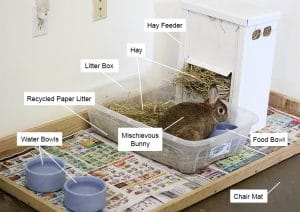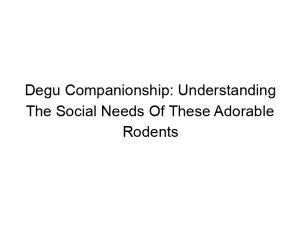Sugar gliders are delightful, nocturnal marsupials that make fascinating pets. Providing them with a balanced diet is crucial for their health and wellbeing. While their primary diet should consist of commercially available sugar glider food mixes, incorporating healthy treats can add variety and enrichment to their lives. However, Best Treats for Sugar Gliders: What’s Safe and What’s Not? is a critical question many owners struggle with. This comprehensive guide will delve into the best and worst options, ensuring you can spoil your sugar gliders responsibly. We’ll cover safe fruits, vegetables, insects, and the treats to absolutely avoid, clarifying what constitutes a healthy supplement to their diet. You’ll learn about portion control, frequency, and how to introduce new treats safely.
Sugar gliders are omnivores, meaning their diet should include both animal and plant-based foods.
In the wild, they consume a variety of insects, nectar, pollen, tree sap, and fruits. Replicating this diverse diet in captivity is essential for their health. A balanced diet prevents nutritional deficiencies and promotes a strong immune system, leading to a longer, happier life for your pet.
The Importance of Commercial Sugar Glider Mixes
The cornerstone of any sugar glider’s diet is a high-quality commercial mix specifically formulated for their needs. These mixes contain the correct balance of proteins, fats, and carbohydrates necessary for their health. Look for mixes that are low in sugar and high in protein, ensuring they’re a suitable base for your sugar glider’s daily intake.
Safe Fruits for Sugar Glider Treats
Fruits should be offered in moderation. Some excellent choices include: berries (strawberries, blueberries, raspberries), melon (cantaloupe, honeydew), mango, and papaya. Remember to remove seeds and pits before offering.
Safe Vegetables for Sugar Glider Treats
Vegetables provide essential vitamins and minerals. Good options include: carrots (small pieces), green beans (cooked and soft), and sweet potatoes (cooked and soft). Avoid excessive amounts as they can cause digestive upset.
Insect Treats: A Crucial Protein Source
Insects are a vital part of a sugar glider’s natural diet, providing essential protein. Offer commercially available insect treats specifically designed for sugar gliders or gut-loaded crickets and mealworms. Always ensure insects are free from pesticides.
Homemade Treats: Recipes and Precautions
With careful planning, you can create simple and safe homemade treats. Remember to avoid honey and excessive sugars. Some simple recipes include mashed sweet potato mixed with a tiny bit of plain yogurt or a small amount of finely grated carrots mixed with a commercial sugar glider food.
Treats to Absolutely Avoid: Toxic Foods
Several common foods are toxic to sugar gliders and should never be given as treats. These include: chocolate, caffeine, alcohol, onions, garlic, avocados, and artificial sweeteners.
Portion Control and Frequency
Treats should always supplement, never replace, a complete sugar glider food mix. Offer treats in small quantities, no more than 10-15% of their daily caloric intake. Avoid feeding treats daily; 2-3 times a week is usually sufficient.
Introducing New Treats
Introduce new treats gradually to avoid digestive upset. Start with a tiny amount and observe your sugar glider for any adverse reactions such as diarrhea or vomiting. If any problems arise, discontinue the treat immediately.
Understanding Sugar Glider Digestive Systems
Sugar gliders have delicate digestive systems. Improper feeding can easily lead to digestive issues. Understanding their nutritional requirements and feeding practices is crucial for their overall health.
Common Digestive Problems and Solutions
Common digestive problems include diarrhea and constipation. If your sugar glider experiences digestive issues, consult a veterinarian specializing in exotic animals. Adjusting the diet or adding probiotics might be necessary.
The Role of Supplements in Sugar Glider Diets
While a good diet usually provides all necessary nutrients, some owners opt for supplements. Consult your veterinarian before adding any supplements to your sugar glider’s diet. Improper supplementation can be harmful.
Comparing Different Commercial Sugar Glider Food Mixes
Numerous commercial sugar glider food mixes are available. Compare ingredients, protein content, and sugar levels to choose the best option for your pet. Look for mixes with a high percentage of protein and minimal added sugar.
The Importance of Fresh Water
Always provide fresh, clean water in a sipper bottle or a shallow dish. Dehydration can quickly become a serious health issue for sugar gliders.
Recognizing Signs of Nutritional Deficiencies
Watch for signs of nutritional deficiencies such as dull coat, weight loss, lethargy, and changes in behavior. Consult a veterinarian if you suspect a nutritional deficiency.
Sugar Glider Dental Health and Diet
Harder foods and treats can help to naturally clean their teeth. Regular checkups by a vet are still crucial to maintain their oral health.
Environmental Enrichment and Diet
A stimulating environment can reduce stress and improve your sugar glider’s appetite and overall health. A balanced diet is part of creating this overall well-being.
Long-Term Health Implications of Poor Diet
A poor diet can lead to various long-term health issues, including obesity, dental problems, and weakened immune systems. Ensuring your sugar glider gets the right nutrition is essential for its longevity.
Frequently Asked Questions
What are the best fruits for sugar gliders?
Berries (strawberries, blueberries, raspberries), melon (cantaloupe, honeydew), mango, and papaya are generally safe options in moderation. Always remove seeds and pits.
Can I give my sugar glider honey?
No, honey should never be given to sugar gliders. It contains bacteria harmful to them and can cause digestive issues. It’s better to stick to sugar-free options.
How often should I give my sugar glider treats?
Treats should only constitute a small portion of their diet, typically 2-3 times a week, not daily. Focus primarily on their commercial sugar glider food.
What are some signs of a poor diet in sugar gliders?
Signs include weight loss, dull coat, lethargy, diarrhea, and changes in behavior. Consult a vet immediately if you observe any of these symptoms.
Can I make my own sugar glider treats?
Yes, but carefully select ingredients and avoid anything toxic. Simple options include mashed sweet potato or finely grated carrots, always in tiny quantities.
My sugar glider is picky. What should I do?
Try introducing a variety of safe fruits and vegetables gradually. If the problem persists, consult your veterinarian to rule out underlying medical conditions.
Final Thoughts
Providing your sugar glider with a balanced diet and appropriate treats is essential for its health and happiness. This guide provides a comprehensive overview of safe and unhealthy foods. Remember, moderation and variety are key. Prioritize a good quality commercial sugar glider mix as the foundation of their diet, and use treats sparingly as supplemental enrichment. Always consult your veterinarian if you have any concerns about your sugar glider’s diet or health. A healthy and happy sugar glider is a rewarding experience, and providing the right nutrition plays a crucial role in achieving this. Make informed choices, and enjoy the companionship of your delightful little pet.




